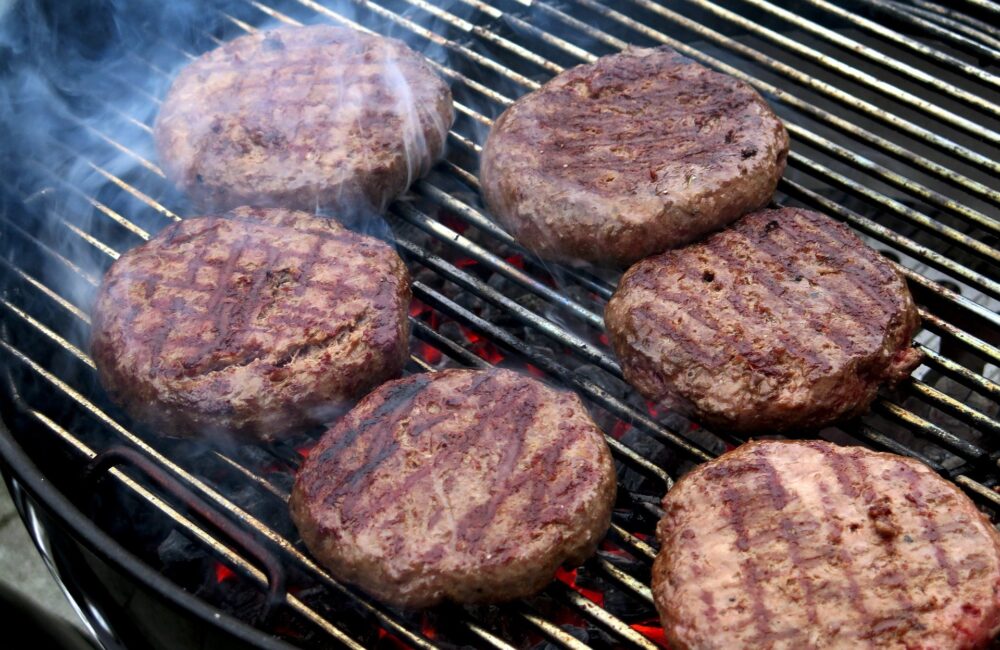What do coal tar, asbestos, mustard gas, and beef jerky have in common? They’re all identified as Group 1 carcinogens by the International Agency for Research on Cancer (IARC). Following suit in 2015, the World Health Organization declared red meat as a Group 2A probable carcinogen and has specifically placed processed meat into the known carcinogen Group 1 category. In an epidemiological study by the World Cancer Research Fund and IARC, it was found that eating 50 grams of processed meat a day—equivalent to about just four slices of bacon or one hot dog—increased the risk of colorectal cancer by 16 percent. This information quickly made headlines, and there has been a tremendously powerful response to this announcement.
Due to the health risks associated with meat as well as its huge environmental impact, companies are shifting away from traditional factory-farm raised beef and towards a new alternative: lab-grown meat. This emerging industry strives to alleviate much of the cruel treatment of animals raised for food as well as reduce its environmental footprint.
Also called “clean meat,” lab-grown meat begins with a live animal’s stem cells.
Also called “clean meat,” lab-grown meat begins with a live animal’s stem cells. These cells are placed into a rich nutrient-dense medium, incubated, and expanded. They are then differentiated into muscle fiber cells and allowed to proliferate for approximately six weeks. Once about 20,000 muscle fiber cells have matured, they are then harvested, minced, colored, and mixed with fats and spices. With this procedure, the company Mosa Meat claims that one tissue sample from a cow can translate into 80,000 quarter pound burgers.
This same process can be applied to any type of live animal tissue. The Tel-Aviv based company SuperMeat is focusing its efforts on poultry. Another company called Finless Foods even claims to have lab-grown bluefin tuna arriving on the menu in 2019. With a long lifespan of 15-30 years, bluefin tuna is especially vulnerable to predatory fishing practices like overfishing. Ultimately, their efforts promise fish free of arsenic, mercury, plastic, and other environmental detriments.
With outstanding returns like these, lab-grown meat has captivated investors and consumers alike. The company Memphis Meats is one of the giants in the industry, having received over 17 million dollars from various investors such as Bill Gates in 2017 alone.
With the introduction of new companies in the race for the highest quality and most affordable lab-grown meat, many still have a ways to go before reaching the average consumer.
Though lab-grown meat is a growing industry, it is still very much an industry of the future. In 2013, Mosa Meat revealed a lab-grown beef patty which cost a striking 300,000 dollars to produce. For lab-grown chicken, Memphis Meats’ production costs 6,000 dollars per pound. With the introduction of new companies in the race for the highest quality and most affordable lab-grown meat, many still have a ways to go before reaching the average consumer.
According to the Food and Agriculture Organization of the United Nations, the livestock industry accounts for a staggering 14.5 percent of all greenhouse gas emissions—with the production of one 113 gram patty of beef using approximately 1799 gallons of water. This reality emphasizes the urgency of a factory farming alternative. But due to its staggering price, is lab-grown meat the only option?
Impossible “Meat” is made from wheat and potato proteins for texture, vitamins, amino acids, and heme, all blended to represent the juicy, flavorful burger enjoyed by many.
A company called Impossible Foods is pioneering a wildly successful plant-based meat. Their Impossible “Meat” is made from wheat and potato proteins for texture, vitamins, amino acids, and heme, all blended to represent the juicy, flavorful burger enjoyed by many. The patty is acclaimed for its meat-like texture and fatty, blood-like juiciness. If the ingredient heme sounds familiar, that’s because it’s the same molecule that carries oxygen in blood and gives it that deep red color. What’s not as familiar is that this molecule is found in every living organism, and the heme used in the Impossible patty comes not from animals, but from the root of the soy plant. Importantly, this burger goes for only 11 dollars in restaurants across America.
With many options out there for those interested in sustainable meat, it all comes down to the basics: quality, affordability, and taste. Whether you’re a meat lover looking for a tasty yet ethical dinner or a vegan seeking a childhood favorite, this next generation of meat seems to be the solution towards a more sustainable future.
Lancet Oncology (2015). DOI: 10.1016/S1470-2045(15)00444-1
Image source: Pixabay






